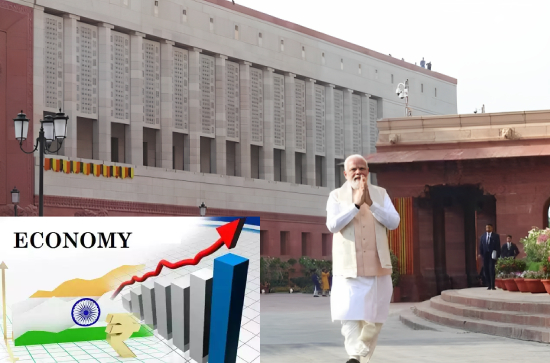The way India is growing and gaining global recognition in all fields is evidently visible. According to Morgan Stanley, a leader in financial services globally, Prime Minister Narendra Modi has altered India to the point where it is taking its place in the world order and emerging as a significant engine of growth for Asia and the entire world.
According to a survey by Morgan Stanley, India of today differs from the India of 2013.
"Compared to 2013, India is different today. India has risen quickly up the global food chain, which has significantly improved the macro and market picture, the report added. In less than a decade, India has changed dramatically," the report said.
One of the largest supply-side policy improvements, according to the brokerage, was bringing corporation tax into line with peers and accelerating infrastructure investment. This was one of the ten significant changes that have occurred since Prime Minister Narendra Modi assumed office in 2014.
Additionally, the growing GST collection, the uniform tax that replaced more than a dozen previous federal and state taxes, and the increasing share of digital transactions as a percentage of GDP all point to the formalisation of the economy.
Other notable developments were the transfer of subsidies to beneficiaries' accounts, the insolvency and bankruptcy legislation, flexible inflation targeting, an emphasis on FDI, government backing for corporate profits, a new law for the real estate industry, and MNC sentiment at a multi-year high, it said.
According to Morgan Stanley, manufacturing and capital spending as a fraction of GDP have been steadily increasing, and by 2031, export market share is expected to more than quadruple to 4.5 percent.
The research predicts that India "will emerge as a key driver for Asia and global growth." Regarding the doubts about India, especially among foreign investors, who claim that the country has not lived up to its potential despite being the second-fastest growing economy and one of the top stock markets over the past 25 years, it was stated that such a view ignores the significant changes that have occurred in India, particularly since 2014.
The 10 significant developments were emphasised in the report, including the formalisation of the economy, the Direct Benefit Transfer, the Insolvency and Bankruptcy Code, the emphasis on FDI, and flexible inflation targeting. These adjustments are a result of India's policy decisions and how they affect the country's market and economy.
The analysis predicts a new cycle in manufacturing and capex as a result of both of these sectors' increasing GDP shares. Additionally, it predicts that India's export market share will increase to 4.5% by 2031, roughly doubling from 2021 levels, with improvements in both goods and services exports, as well as a significant change in the country's consumption pattern.
The report stated that as India's per capita income rises from its current level of USD 2,200 to around USD 5,200 by F2032, there would be significant changes to the consumption basket and a boost to discretionary spending.
India has quickly risen to the top of the world rankings for real-time payments and digital transactions.
Inflation would continue to be benign and less volatile, according to the report, which would indicate shorter rate cycles and a benign trend in the current account deficit.
It said that this explains India's ostensibly high headline market valuations and that the share of profits in GDP has quadrupled from all-time lows in 2020 and is expected to climb considerably higher — maybe by another double — contributing to good absolute and relative earnings.
The market's sensitivity to a US recession and US Fed rate increases also appears to be decreasing as India's reliance on international capital market flows has decreased, it continued.
A global recession, a lopsided general election result in 2024, a rapid increase in commodity prices due to supply disruptions, and a shortage of trained workers, according to the research, are the main dangers to India's economy.

























